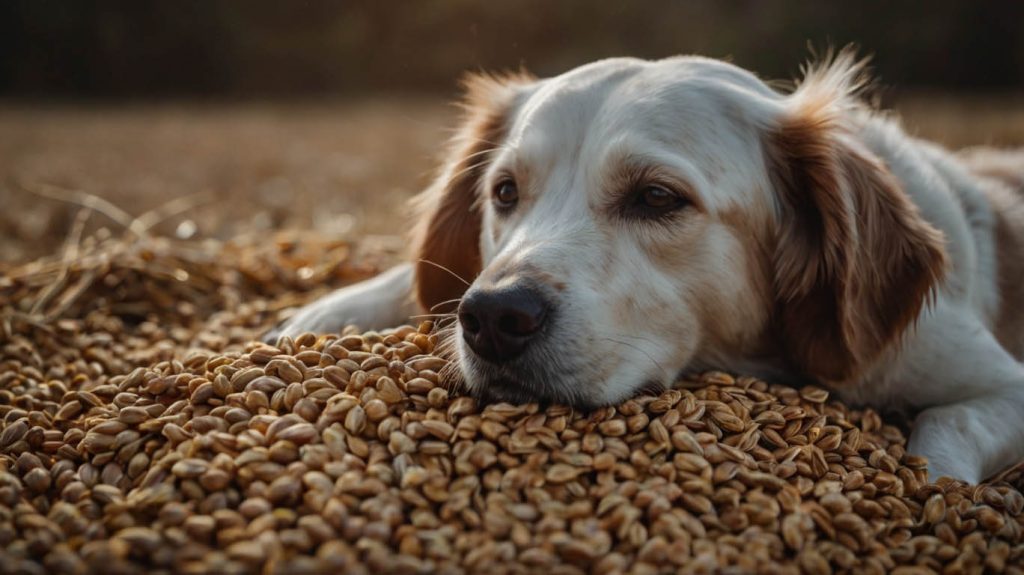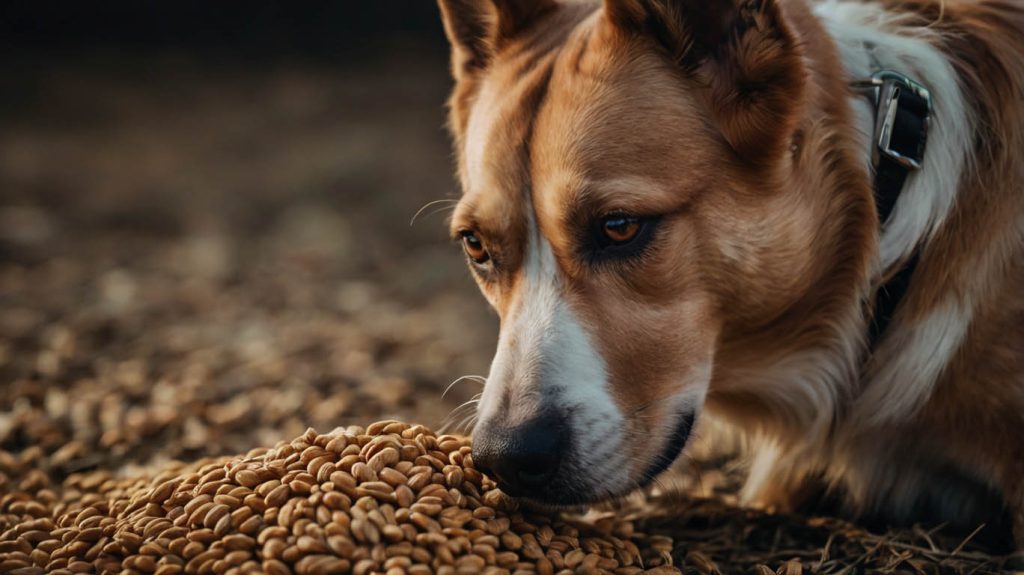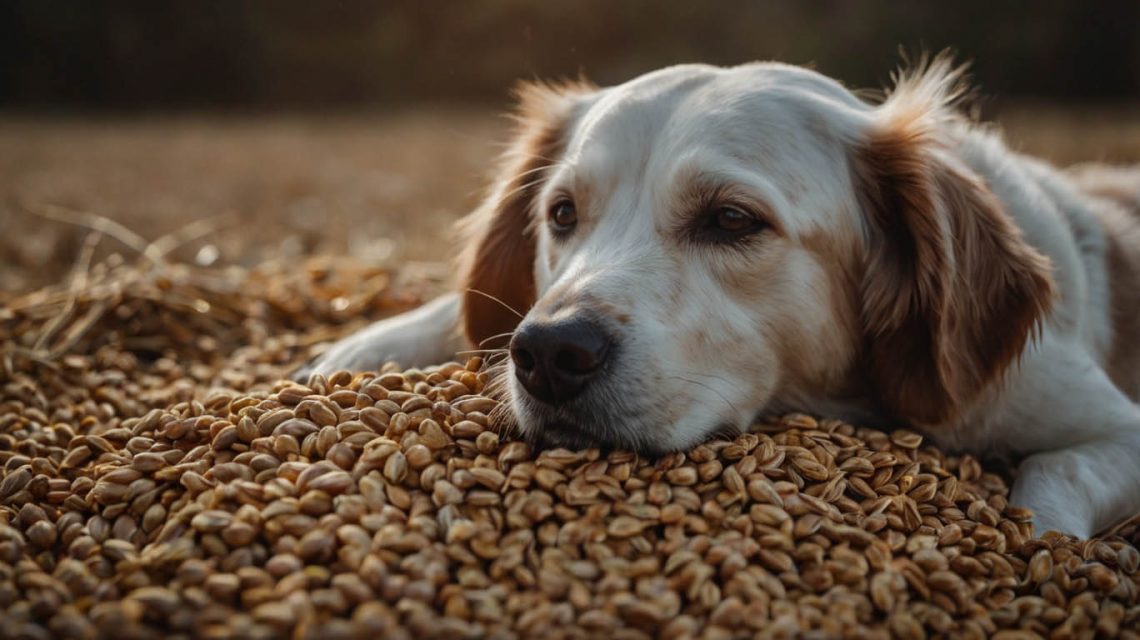Benefits of Grains for Dogs: Why Your Pet Might Need Them
Mark stood in the pet food aisle, feeling completely overwhelmed. For the past year, he had been feeding his energetic Border Collie, Skye, an expensive grain-free diet. He’d been convinced by slick marketing and popular trends that “grain-free” was the healthiest, most “ancestral” way to feed his dog. However, after a recent vet visit, his veterinarian had gently suggested switching Skye back to a high-quality, grain-inclusive food. Mark was confused. He had thought he was doing the right thing. This left him questioning everything he thought he knew and asking: what are the real benefits of grains for dogs?
Mark’s confusion is a common experience for many well-intentioned dog owners. In a world dominated by the “grain-free” trend, the idea that grains can be not just acceptable, but actually beneficial, can seem counterintuitive.
Consequently, this definitive guide is here to provide a clear, balanced, and authoritative look at this often-misunderstood topic. We will explore the science, debunk common myths, and detail the significant nutritional benefits of grains for dogs. Therefore, you can make an informed, confident decision about what’s truly best for your beloved companion.
Debunking the Myth: Are Grains “Fillers” or Nutrients?
The most pervasive myth about grains is that they are cheap, non-nutritious “fillers” used to bulk up dog food. This is a fundamental misunderstanding. While low-quality fillers do exist in some pet foods, wholesome, intact grains are a valuable source of essential nutrients.
When included correctly in a balanced diet, grains provide:
- Carbohydrates for energy
- Essential fatty acids for skin and coat health
- Dietary fiber for healthy digestion
- Key vitamins and minerals like B vitamins and magnesium
The idea that dogs are pure carnivores that cannot digest grains is also incorrect. Through thousands of years of domestication, dogs have evolved to efficiently digest starches and grains. They are, in fact, omnivores, capable of thriving on a diet that includes both animal and plant matter.

The Top Health Benefits of Grains for Dogs
Let’s dive into the specific advantages of including healthy grains in your dog’s diet. These are the benefits of grains for dogs that veterinarians often highlight.
Excellent Source of Sustainable Energy
Carbohydrates are the body’s primary and most easily accessible source of energy. Wholesome grains like brown rice, oatmeal, and barley provide complex carbohydrates that are broken down slowly, offering a steady, sustained release of energy throughout the day. This is particularly beneficial for active and working dogs, like Mark’s Border Collie, Skye, who need plenty of fuel for their daily activities.
Promoting Healthy Digestion with Dietary Fiber
One of the most significant benefits of grains for dogs is their high fiber content. Dietary fiber is crucial for maintaining a healthy digestive system.
- Soluble Fiber: Found in grains like oatmeal and barley, it can help slow digestion, which can be beneficial for managing blood sugar levels.
- Insoluble Fiber: Found in whole wheat and brown rice, it adds bulk to the stool, promoting regular bowel movements and helping to prevent constipation.
A diet with a healthy amount of fiber from grains can lead to better stool quality and overall gut health.
Providing Essential Nutrients, Vitamins, and Minerals
Healthy, whole grains are not empty calories. They are packed with a surprising amount of nutrition.
- B Vitamins: Grains are a great source of B vitamins, which are vital for everything from energy metabolism to nervous system function.
- Minerals: They provide important minerals like magnesium, selenium, and manganese.
- Protein: Grains like quinoa and oats even contribute valuable plant-based proteins and amino acids to the overall diet.
Supporting Heart Health: The Grain-Inclusive Advantage
This has become one of the most talked-about benefits of grains for dogs in recent years. In response to the FDA’s investigation into a potential link between some grain-free diets and heart disease (DCM), many veterinary cardiologists are now recommending diets that include healthy grains. While the exact cause is still being studied, the correlation has led to a renewed appreciation for the role that traditional, grain-inclusive formulas have played in canine health for decades. Many of these vet-formulated diets have a long, proven track record of supporting long-term heart health.

What Are the “Good Grains”? Identifying Healthy Options
Not all grains are created equal. When looking for a high-quality, grain-inclusive food, you want to see these types of wholesome grains on the ingredient list.
Brown Rice, Oats, and Barley: The Wholesome Grains
- Brown Rice: A highly digestible complex carbohydrate that is gentle on the stomach and a good source of fiber.
- Oats/Oatmeal: Packed with soluble fiber, which is great for digestion and can help regulate blood sugar. They are also rich in minerals.
- Barley: Another excellent source of fiber and other essential nutrients.
Quinoa, Millet, and Sorghum: Nutrient-Dense Alternatives
These “ancient grains” are also fantastic choices and are often found in premium dog foods. They are packed with protein, fiber, and a host of vitamins and minerals, offering significant nutritional benefits of grains for dogs.
What About Grain Allergies in Dogs?
The fear of allergies is the number one reason people switch to grain-free diets. However, true grain allergies are actually very rare in dogs.
According to veterinary dermatologists, dogs are far more likely to be allergic to the protein source in their food, such as chicken, beef, or dairy. While a small percentage of dogs can be allergic to a specific grain like wheat, it is not nearly as common as marketing would have you believe. If you suspect a food allergy, the only way to get a real answer is to work with your veterinarian on a proper elimination diet trial.
A Case Study Resolved: How Mark and Skye Rediscovered Grains
Let’s return to Mark and his Border Collie, Skye. After his vet visit, Mark felt more confident. His vet explained that for a high-energy breed like Skye, the sustained energy from complex carbohydrates was actually ideal. She recommended a high-quality, chicken-based kibble that used brown rice and oatmeal as its primary grain sources.
Mark made the switch gradually over a week. He noticed a positive change almost immediately. Skye’s energy levels seemed more consistent on their long runs, and her digestion improved, resulting in better stool quality. Mark realized that he had been caught up in a marketing trend without fully understanding the nutritional science. He was relieved to have found a food that was not only more affordable but was also providing clear, tangible benefits of grains for dogs like his.
The Final Verdict: A Foundation of Healthy Nutrition
The benefits of grains for dogs are real, scientifically supported, and often overlooked in the modern pet food landscape. For the vast majority of dogs, a diet that includes wholesome, intact grains is a healthy, balanced, and safe choice that supports everything from their energy levels to their digestive and heart health.
Don’t let marketing trends dictate your dog’s nutrition. We strongly encourage you to have an open conversation with your veterinarian about the best diet for your specific dog. They can help you navigate the myths and facts to find a food that will support a long, happy, and healthy life for your companion. What has been your experience with grain-inclusive diets? Share your thoughts in the comments below!


